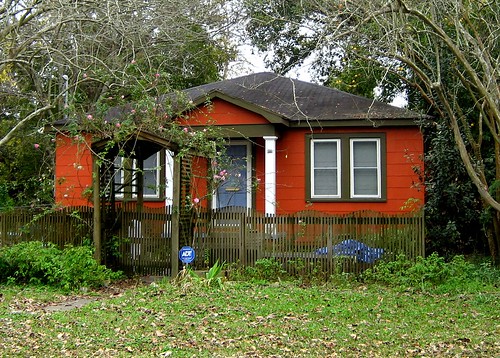Hahahaha! If it's not tarantulas, it's tumbleweeds. This just in from Clovis, New Mexico: Tumbleweeds Devour New Mexico Town. The military has been deployed.
This is a good excuse to revive one of my favorite posts: The Trouble With Tumbleweeds (December 2012):
The Trouble with Tumbleweeds
 |
| Russian thistle, in its pre-tumbleweed life. Credit: Jim Pisarowicz |
You may recall I killed a tumbleweed on my way to Alamogordo.
 |
| Russian thistle, aka tumbleweed. Credit: Fred Bauder. |
They're kind of engaging, tumbleweeds, like bouncy lab pups always on the wrong side of trouble, or prickly tribbles, and it's difficult not to anthropomorphize them into young'ns, teen-agers, and adults, depending on size. I like how the Quantum Biologist describes them:
"Tumbleweeds: ... out here in the day-to-day life of the American West, they’re practically an animal of their own. You swerve to avoid hitting them on the highway. They nuzzle the barbed-wire fences, sniffing out an opening. They show up mysteriously like stray cats in your yard overnight. Though native Westerners give them scant notice, transplants like me still have a starstruck fondness for them, as if they were some B-list actor from a John Ford movie that we’d discovered, lost and drunk, making a cameo in the alley behind our house...."
The Columbus Museum of Art commissioned this cinematic study of tumbleweeds. It is a masterpiece:
Tumbleweeds are not always endearing. Here is the account of a member of the Chihuahua Desert Wildlife Rescue organization:
"You have not really experienced life until you have been attacked by one of these monsters as you drive along our local roadways. This can be especially frightening at night when, under cover of darkness, they sneak up on you and devour your car. I remember a cold, windy night a good many years back. A good friend and I were driving along a narrow, rocky road in the mountains near Bingham, New Mexico, in my friend's VW bug. Suddenly we were am-BUSHED by a huge tumbleweed flying off the mountainside. I do believe we both wet our pants."
I thought tumbleweeds were indigenous Southwestern plants, but they're not - they're Asian exports, thought to have insinuated their seed into grain brought by immigrants to South Dakota in the 1870s. New Mexico considers them noxious weeds. Most tumbleweeds in New Mexico are the Russian thistle.
As early as 1895, the Russian thistle had proven so prolific that one alarmed academic had this to say:
"Kill it first, if possible, whatever it may be, and find out its name afterward... There is but one treatment to recommend for (it), utter extermination from New Mexico, and let me emphasize this statement: Now, if ever, is the time to exterminate it!"
When driving down a New Mexican road, it is fascinating to see tumbleweeds caught up against fences, trapped there by prevailing winds and wire. Eventually, a pile-up against the fence gets tall enough so that the tumbleweeds at the top can get over to the other side.
En route to Santa Fe last week, I was enthralled by the tumbleweeds on the fence along Highway 285 south of Cline's Corners. Look on the left side of the road.
Here is a good photo of tumbleweeds piled up along a fence.
 |
| Tumbleweeds against fence, New Mexico. Credit: Sarah at Adobe Nido. |
In reading the text to describe Sarah's photo above, you can see how hard it is to write about tumbleweeds without imbuing them with thoughts and feelings!
So, is Russian thistle good for anything?
According to Utah State University:
"Russian-thistle hay saved the beef cattle industry during the Dust Bowl of the 1930’s, when no other feed was available for starving animals."
and:
"Cattle and sheep eat Russian-thistle, and it is a minor component in mule deer and elk diets until it flowers and becomes spiny. It is an important prairie dog food, and pronghorn eat it readily. Russian-thistle seeds are eaten by birds, including scaled and Gambel's quail, as well as small mammals."
Well, other than nocturnal ambushes of innocent people, why are tumbleweeds a problem?
Again, Utah State University offers the best description:
"Livestock ranges, deteriorated from drought or overgrazing, are frequently invaded and dominated by Russian-thistle. After seeds mature in late fall, the plant stem separates from the root and the plant is then blown by wind. Seeds fall to the ground as the plant tumbles. The tendency of dead plants to collect along fence lines and buildings creates a fire hazard. During a fire, ignited plants can blow across fire lines and make fighting fire more difficult."
How to best manage Russian thistle?
I like Utah State University's emphasis that Russian thistle thrives in disturbed land (see my post re: salt cedars), thus recommends solutions related to this core cause:
"Prescribed burning will not control Russian-thistle since it thrives on disturbed sites, and seeds are easily spread from unburned areas by tumbling weeds. Some herbicides are effective against Russian thistle, and current herbicide information can be found in the Weed Management Handbook on the University of Wyoming Extension website. Revegetation of infested areas, along with the removal of disturbing factors like overgrazing and fire, is the best way to repair lands infested with this weed." [Emphasis mine.]
I leave you with the Tumbleweed Invasion. (You may wish to hit the mute button for maximum enjoyment.)

















































